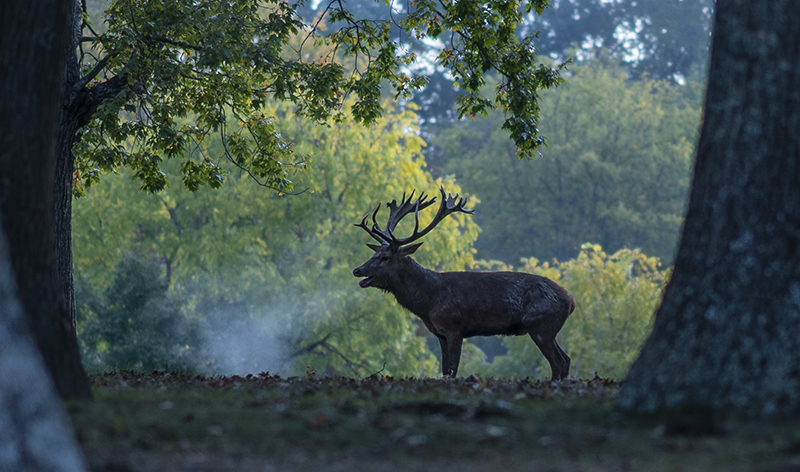Hunting is a very personal thing. It allows humans to express the programing within their DNA and we follow traditions that have been passed down for many years. As long as a hunter is within the law, other hunters have no business passing ethical judgement on their actions. I’ve participated in many forms of hunting all over the world. Some I enjoyed more than others, some I will continue to do, and some I will never do again. Until we are once again regulated to hunting as our primary source for food, our hunting ethics are mostly dictated by law, and the main purpose for our pursuit, is fun.
As I’m sure many of you are, I’m routinely asked for advice with regard to how to be more successful at hunting. Hunting is – as I have written before – an art and a craft; some are very good at it because they have learned things that make them more successful. Being more successful at hunting is not what this is about. This is about having more fun while hunting.

The practice of shooting at animals at great distances while hunting is becoming very popular, and manufactures are doing everything they can to support this endeavor. Oddly, this desire to engage at distance is in direct contradiction to almost everything else humans do for fun. There’s a reason front row and ringside seats cost the most; that is where everyone wants to sit.
Hunters are now beginning to marvel at the distance of the shot more so than the skill of the stalk. But accomplishments we’ve marveled at for many years were just the opposite. Back in junior high, when you managed to sit beside the best-looking girl in school during lunch, you told all your buddies about it. If she was sitting on the other side of the cafeteria, you never mentioned it. Humans like to get close to things they’re excited about because, well, it’s more exciting.

Think about it this way. If you go to Yellowstone and the buffalo are standing in the road right beside your vehicle, you are amazed. If a bull elk or a grizzly bear is standing beside the road, you’ll watch in wonder until they leave. If they’re meandering around a half mile away, you’ll acknowledge them, but drive on. Listen to anyone tell their tales of seeing animals in a Natural Park and almost all the stories share the common thread of, “we were so close.” Humans like to get close to things that excite them. If you share an airplane with Ivanka Trump, you’ll mention it; if you sit beside her on an airplane, not only will you brag about it, you’ll never forget it.
This is not a treatise against the ethics surrounding shooting animals at long range while hunting. And, I’m not saying it is something that should never be done. I think hunters should experience all sorts of methods. In fact, being able to effectively take an animal at a great distance definitely improves your chances for success. Consider this, since the dawn of time hunters have been trying to figure out ways to increase their effective range. It’s why we have the 300 Winchester Magnum, high magnification riflescopes, and incredibly efficient and gravity defying ammunition.

What I’m saying – and this is important – is that hunters will very likely have more fun and more memorable hunting experiences if they try to get as close as possible to the animal they are after. These close encounters are what memories are made of; they are unforgettable experiences that brand themselves on your soul. Hunting is about closing the distance and I’m of the opinion that when you close that distance with your feet as opposed to feet-per-second, you have more fun.
Do you need to be a good marksman to hunt? No, but it helps. Do you need to be able to shoot at great distances to hunt? No, but it helps. What you really need to be able to do, to be successful at – and really enjoy hunting – is to be able to hunt. Even so, sometimes the arts and crafts of hunting and distance marksmanship come together.

I was hunting mule deer in Wyoming and late one evening we located a nice buck at almost two miles away. The next morning, we found him close to where we had seen him the night before. When he bedded down, we began a stalk that took more than two hours. Lying prone just over the crest of a ridgeline with my rifle on a bipod, I distinctly remember my guide telling the range was 91 yards. The buck stood up and just as ready to shoot my guide whispered, “Wait, let me turn the camera on. I want to get this on film.”
When the camera came on it made a beep and the big mule deer buck immediately took off down the canyon. We had this buck dead to rights, and it had been a very exciting stalk with low crawling and much anticipation. My guide was cussing and apologizing, I was swiftly slinging up and rolling over into the seated position as I watched the buck increase the distance with every step. He stopped and my guide said, “318 yards.” I placed the reticle slightly over his back and the buck collapsed at the shot.

Yes, practice to make whatever shot you think you might have to take to fill your tag. But what I’m saying is that if fun is the main object of your pursuit, get closer! Instead of bragging about how far the shot was, maybe what hunters should be bragging about is, how close they got.


